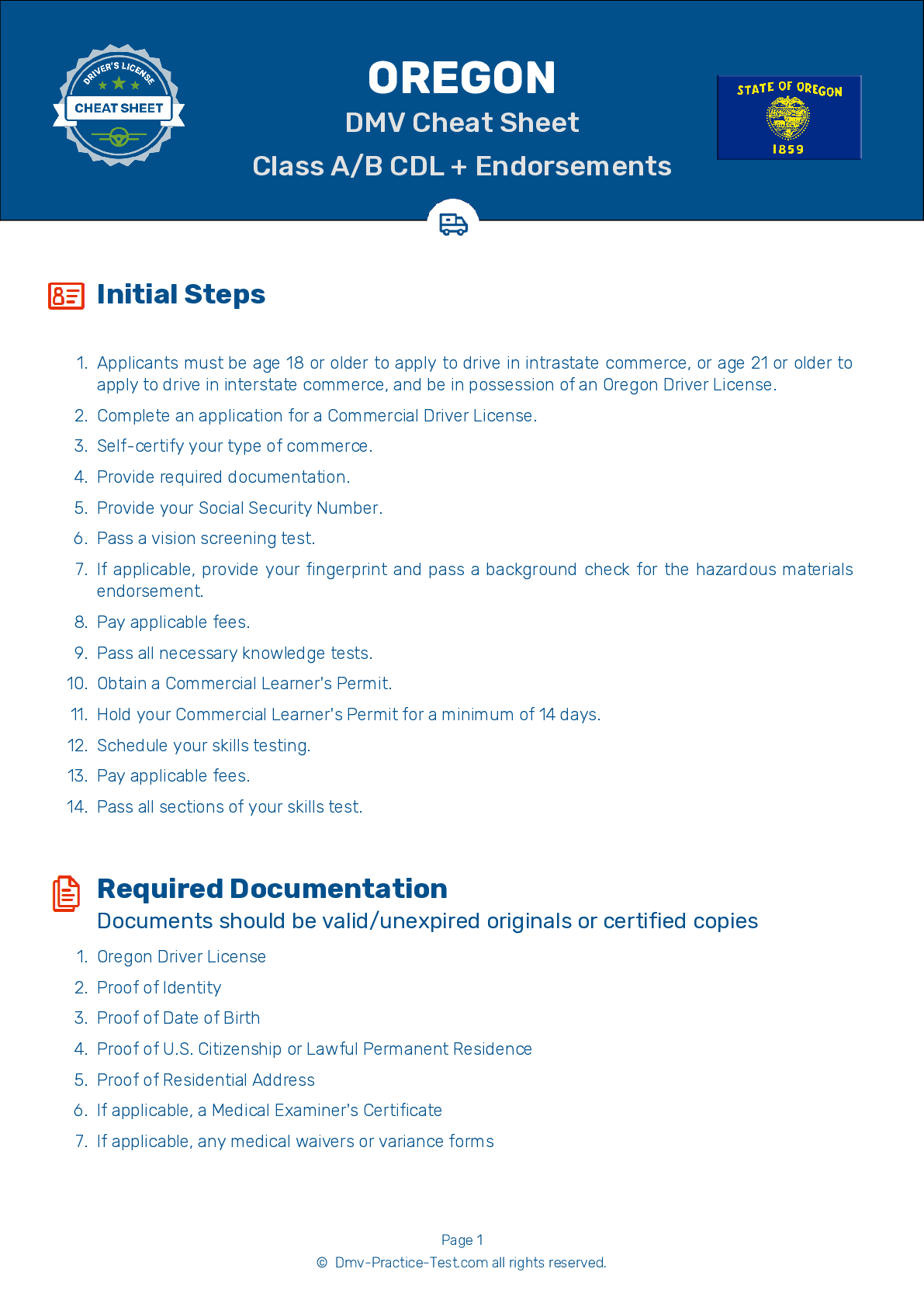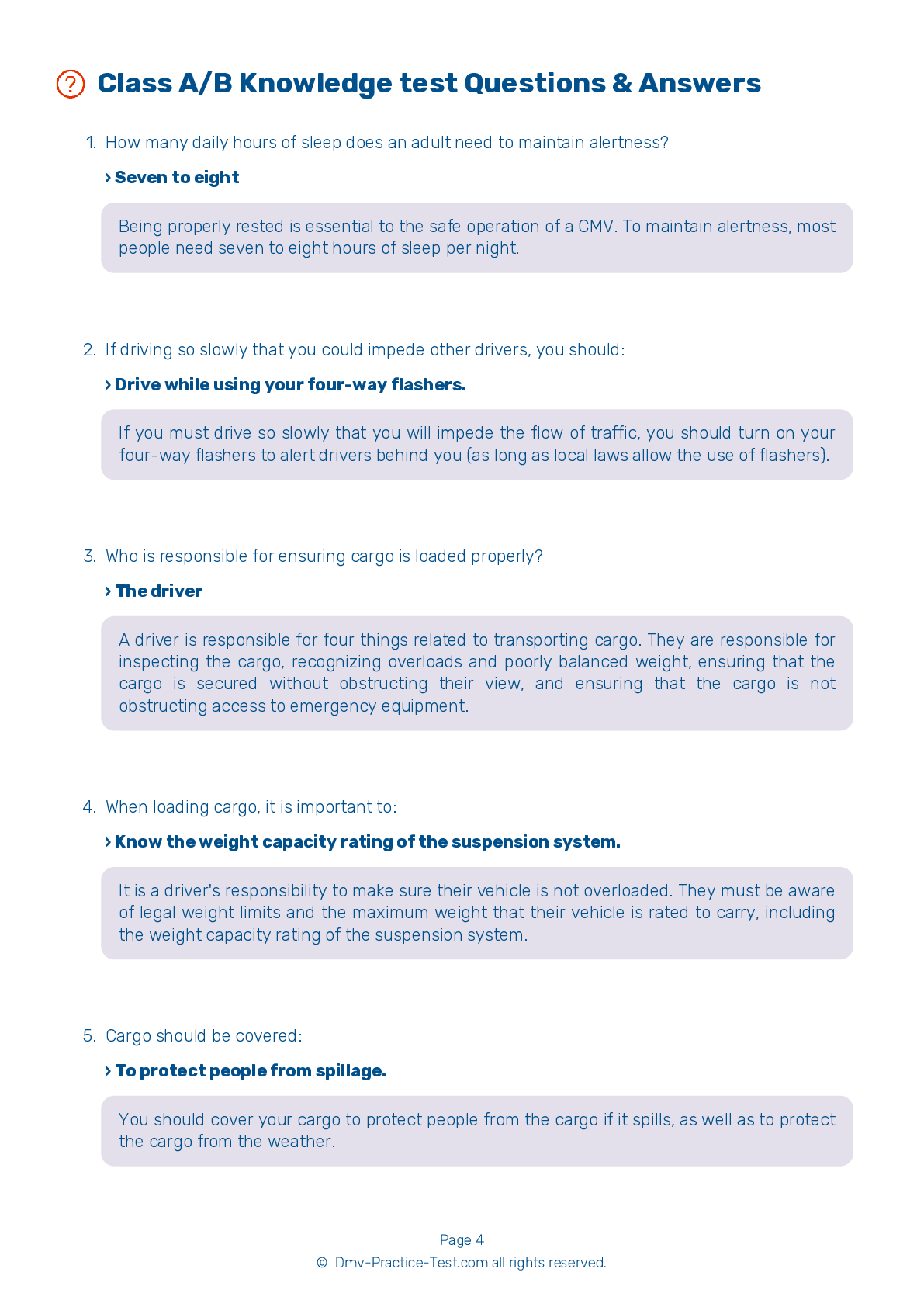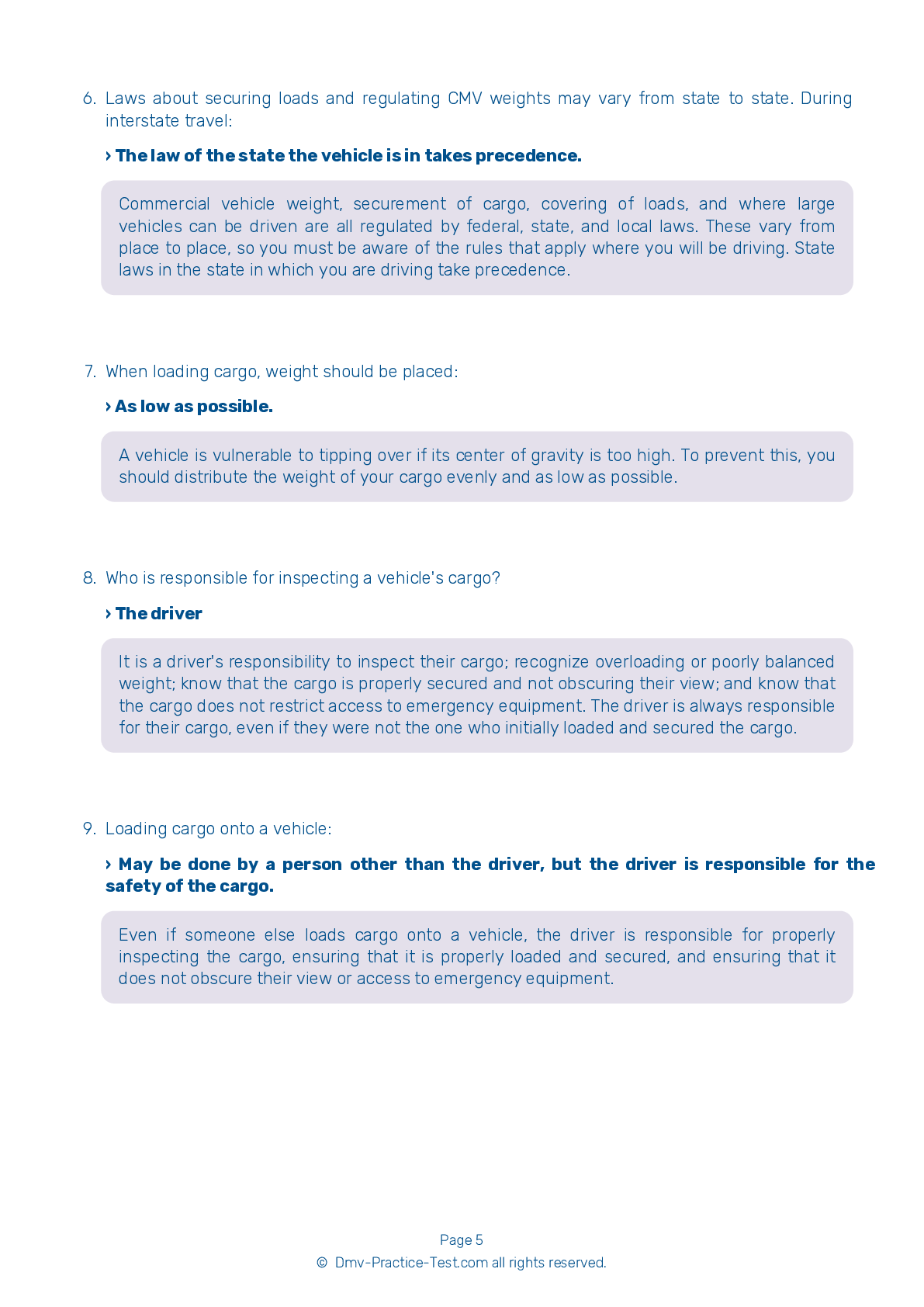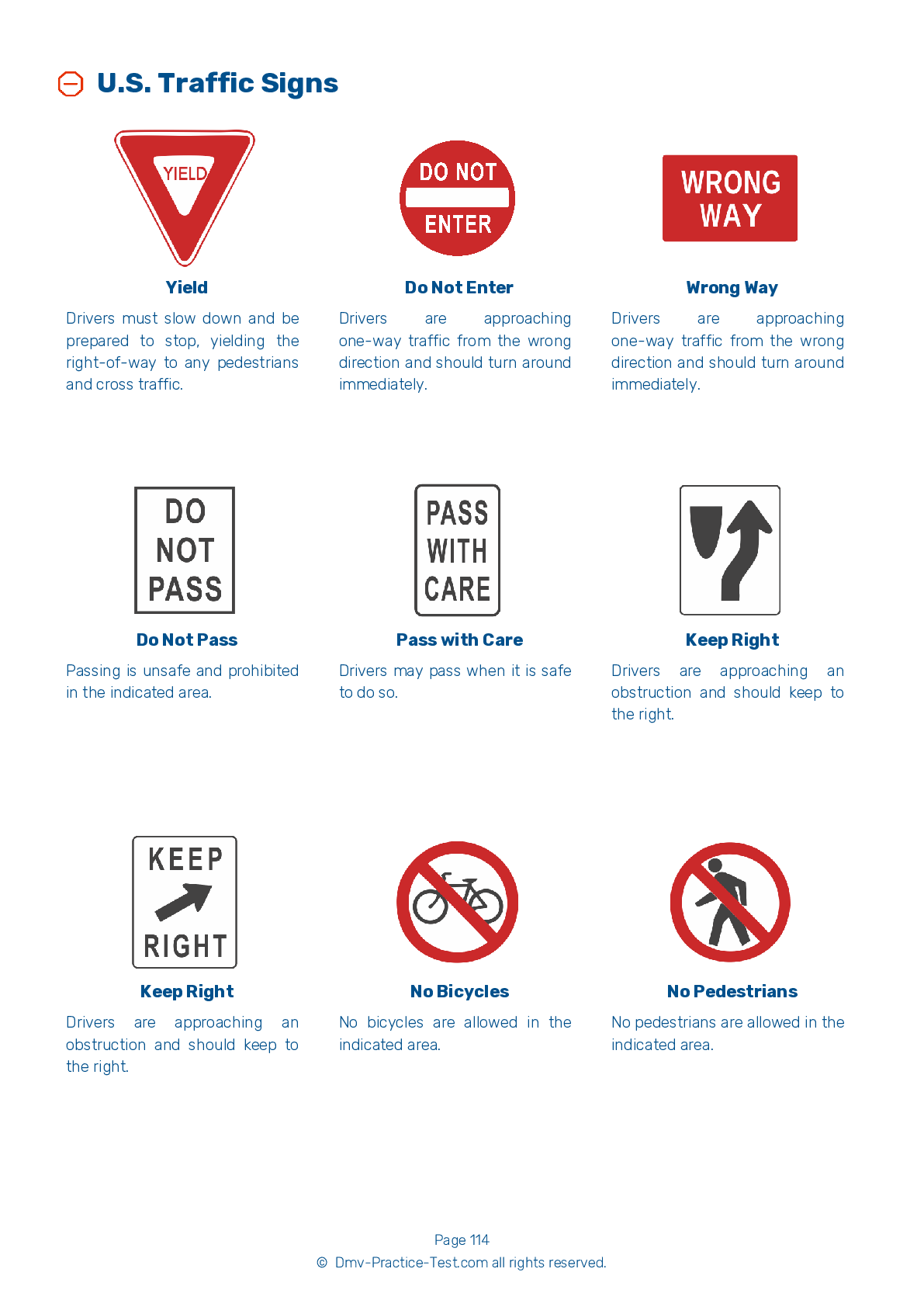Passenger #2
Passenger Endorsement | Oregon 2025 #2
Train for FREE with our Oregon CDL passenger endorsement practice test online. The official exam test consists of several obligatory parts, with all of them checking your knowledge of different blocks of road rules. If you need to obtain a OR DMV passenger endorsement in 2025, practice as much as possible. Free sample tests published on our website will help you check and improve your knowledge and boost your grades. Please bear in mind that DMV requirements for issuing a CDL permit with passenger endorsement may vary from state to state.
20
16
20
1 . Steering wheel play should be no more than:
A steering wheel should have no more than 10 degrees of play. This is equal to about two inches of movement at the rim of a 20-inch wheel. If there is more play than this, it may be difficult to steer.
2 . After a tire has been changed, the driver should stop after a short distance to:
After changing a tire, you should stop a short distance later to recheck the tightness of the tire's lug nuts.
3 . To prevent fatigue while driving, you should:
Close the vents.
A hot, poorly-ventilated area can make a person sleepy. Opening a window, opening a vent, or using the air conditioning can help keep the cab cool and reduce the risk of fatigue.
4 . After a vehicle is started, warning lights and buzzers:
Should remain on.



